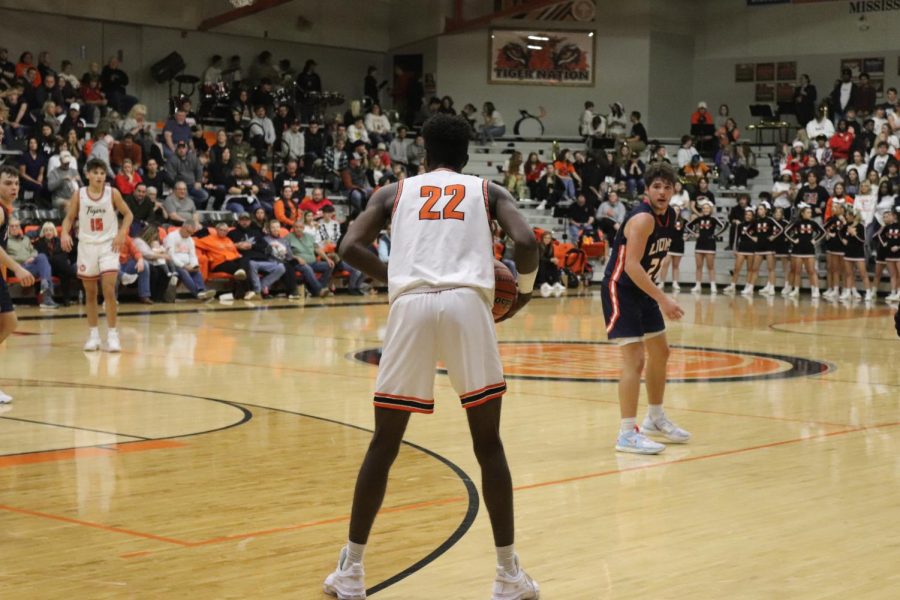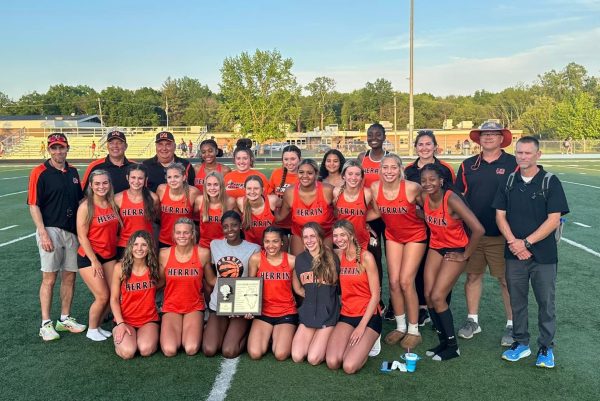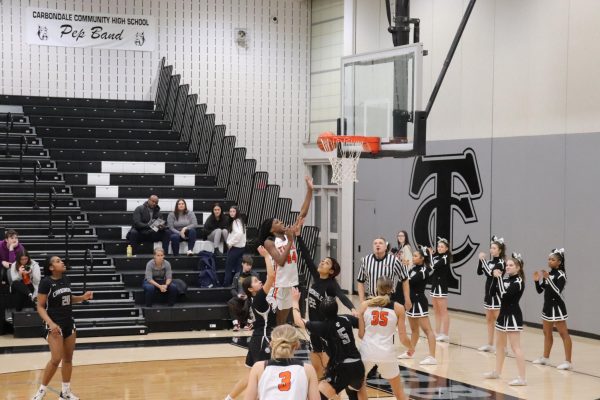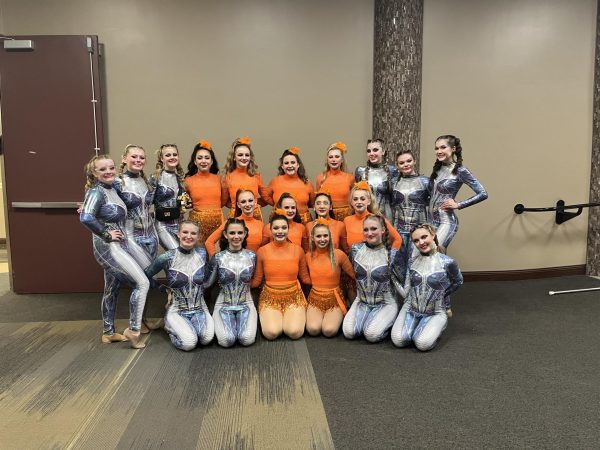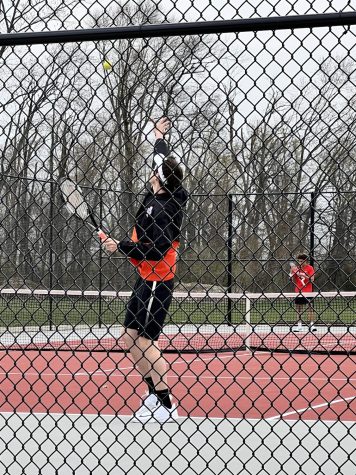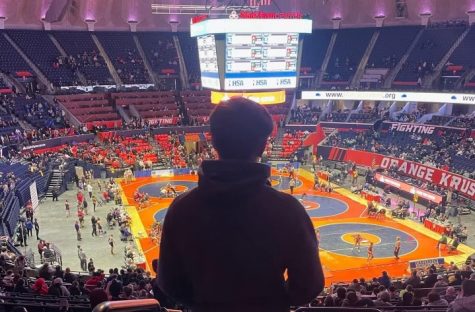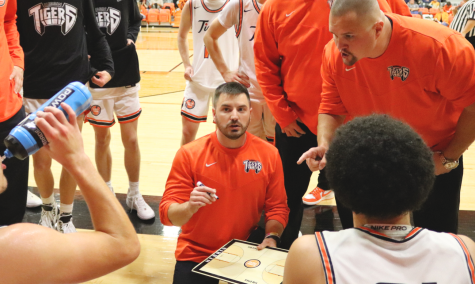“Sweeping Sportsmanship Under The Rug”
Photography, Jaci Bethel
Johnathan Harrison (11), holds the ball looking to pass during a play.
Throughout the world of both school and professional sports, it is no secret that the act of good sportsmanship is rapidly becoming a thing of yesteryear. With modern sports of today being tainted by fights, arguments, hecklers, poor losers, and ego, athletes and spectators alike are now living in the new toxic world of sports.
In past decades, players and coaches alike saw the world of sports as an escape. Designed for students to have fun in and out of school, as well as a way for kids and young adults to learn good life skills in and out of their sport of choice, spots like basketball and football were a competitive, but fun way for kids to learn and adapt skills on and off the field. Nowadays, sports and its athletes are becoming more and more fixated on the negative aspects of the game. Some athletes, especially at the high school level, are more focused on potential “clout” they can receive by starting a fight with a rival team, or arguing a tough call to seem like a tough player. In reality, this could backfire, taking away from the actual game, and leaving the players and their team embarrassed.
A big question revolving around this topic is present: How do people on the outside perceive the negative actions of student athletes? Stephanie Allen, HHS Athletic Director, has seen it all in the world of sports, good and bad. She believes that one main contributing factor to the rise in poor sportsmanship is the behavior of the pro athletes that are idolized in today’s society. Professional athletes in the world of sports are not always the perfect people they are often made out to be. The actions of pro athletes, good or bad, rub off on students, and this sometimes leads to negative actions on and off the field, because student athletes look up to their favorite sports figures.
With more and more players showing poor attitudes in their respective ways, it is up to the people around them to guide them back to a good and healthy playing environment. Allen believes that clear rules, good team building activities, and building relationships would help limit altercations between players and teams, and create a better environment for all. She also added that “The punishment has to fit the crime for each player.” This means that “first time offenders” would be given less of a punishment for a one time accident. On the other end of the spectrum, athletes who repeatedly find themselves in altercations on and off the court would be met with a heavier punishment.
Though it may seem like sportsmanship is rapidly becoming an ideal of the past, it is not going anywhere. Steph Allen believes that “More positive influences can outweigh the negative, and coaches and athletic directors alike should address bad actions instead of just sweeping them under the rug.” With increased accountability from schools and their authority figures, positive influences, and a renewed sense of love for the game, we could soon be seeing a drastic decrease in the act of poor sportsmanship.
Jarret Coleman is a senior for the 2022-2023 year. He is excited to manage the newspaper as he thoroughly enjoys journalism.

Jaci Bethel is a senior for the 2023-2024 school year and a second year member of Tiger Journalism. She has found a passion for journalism and plans to...



